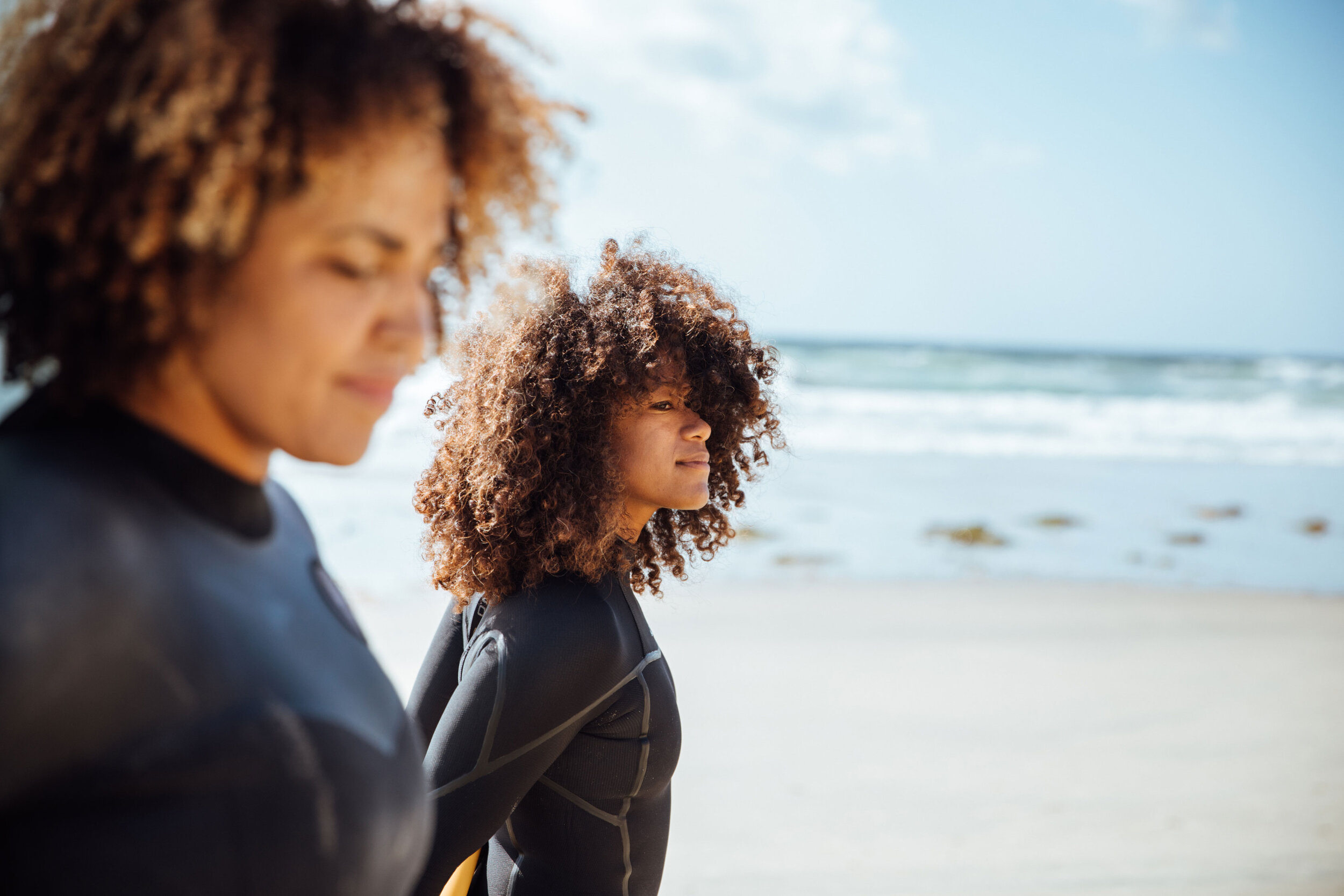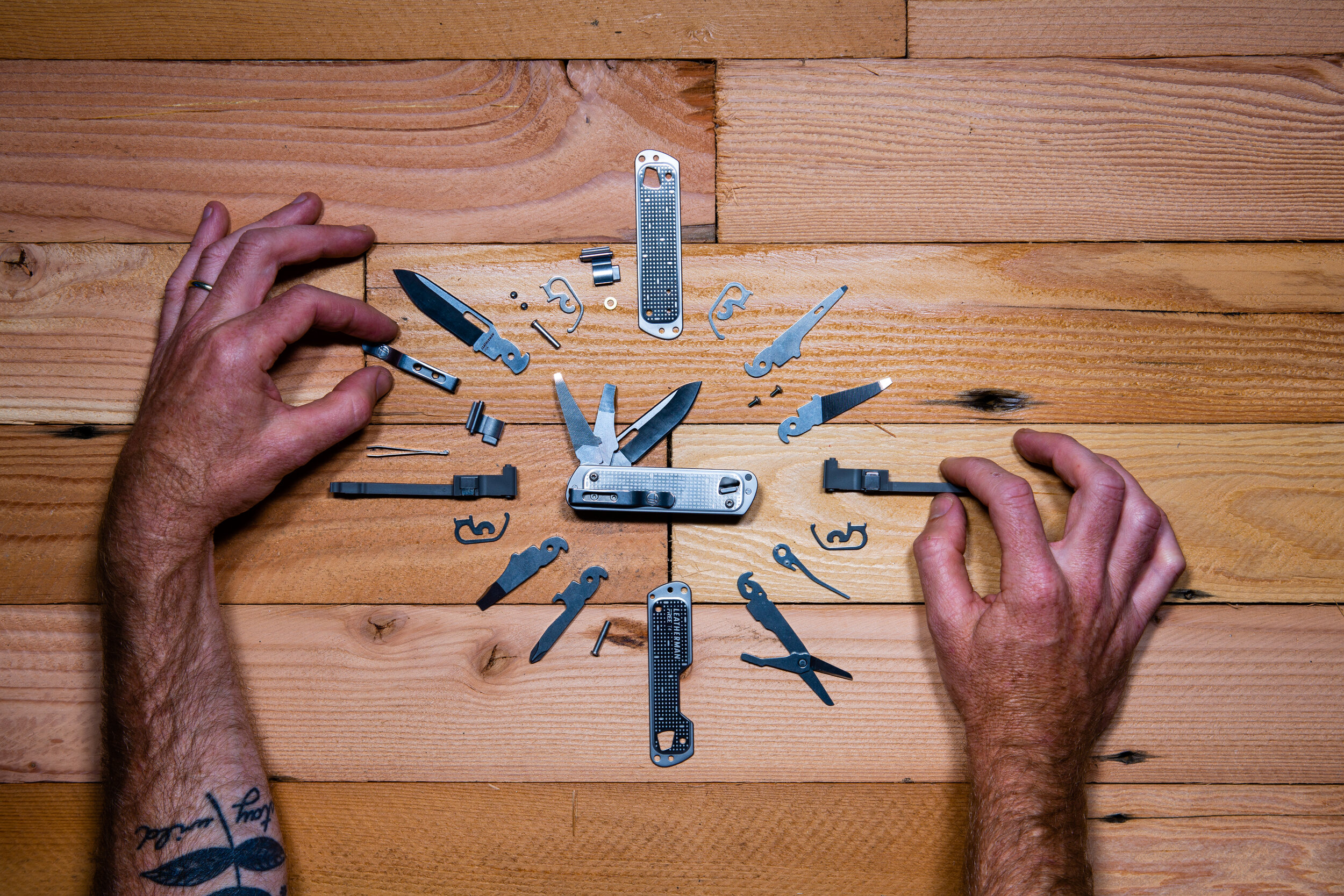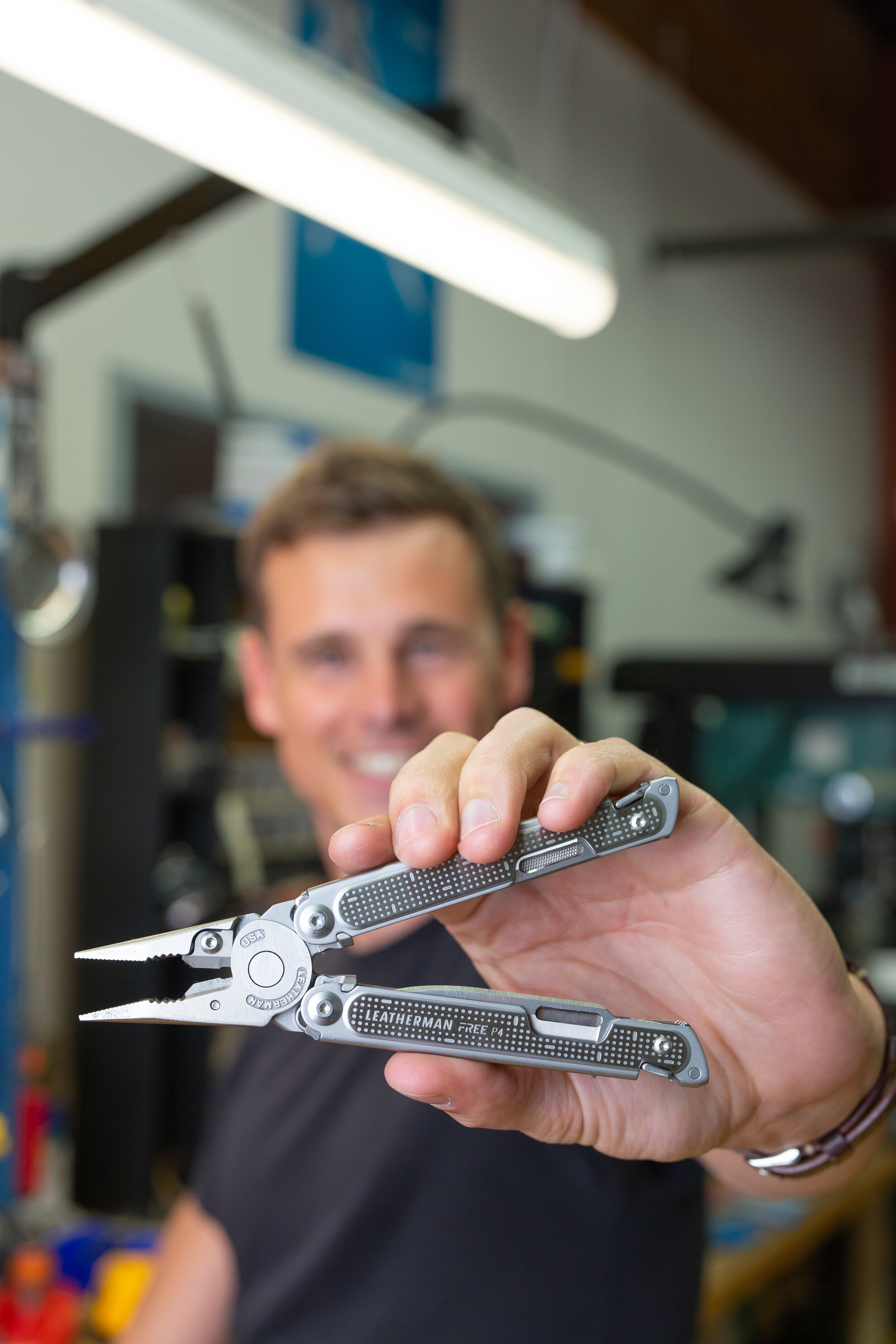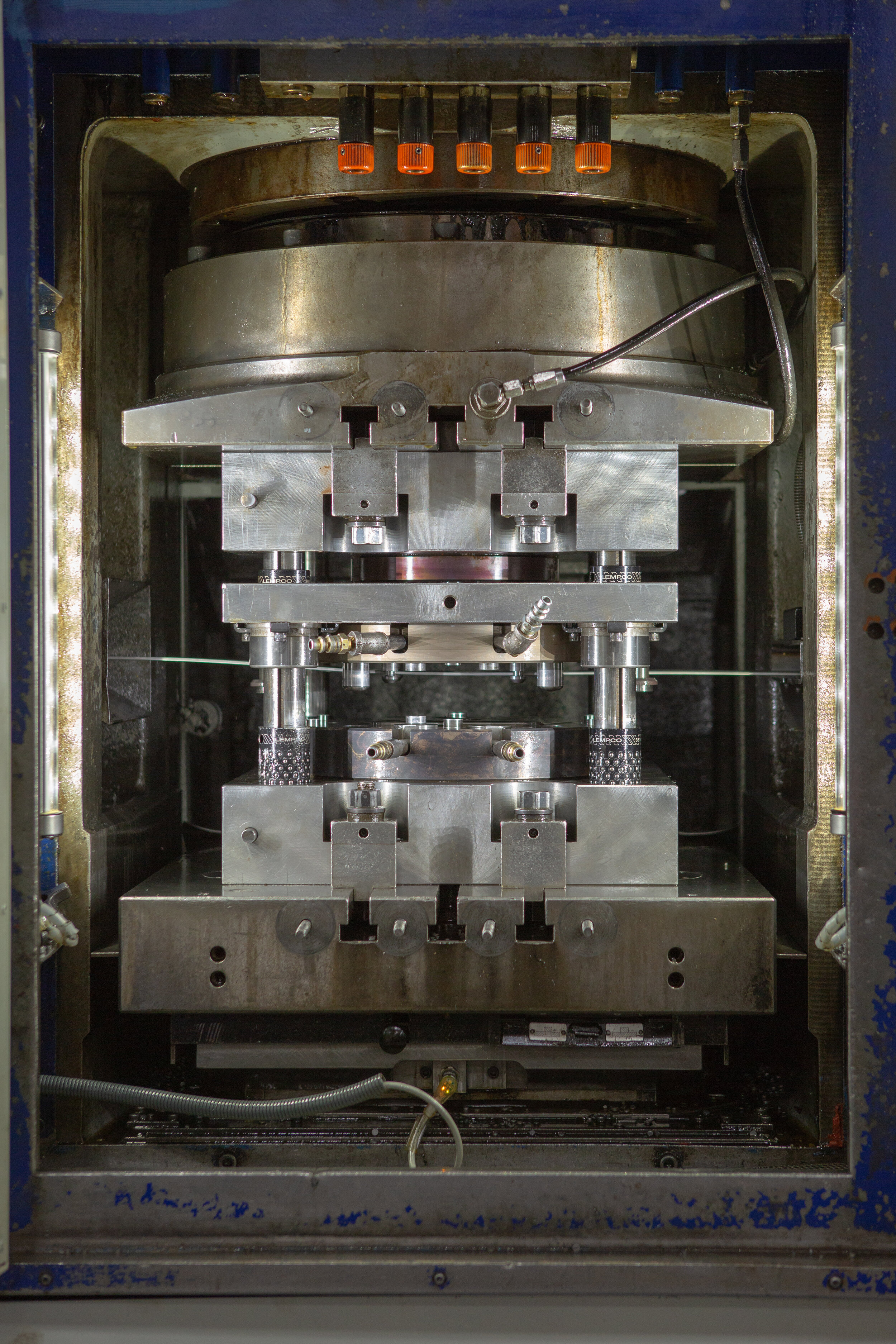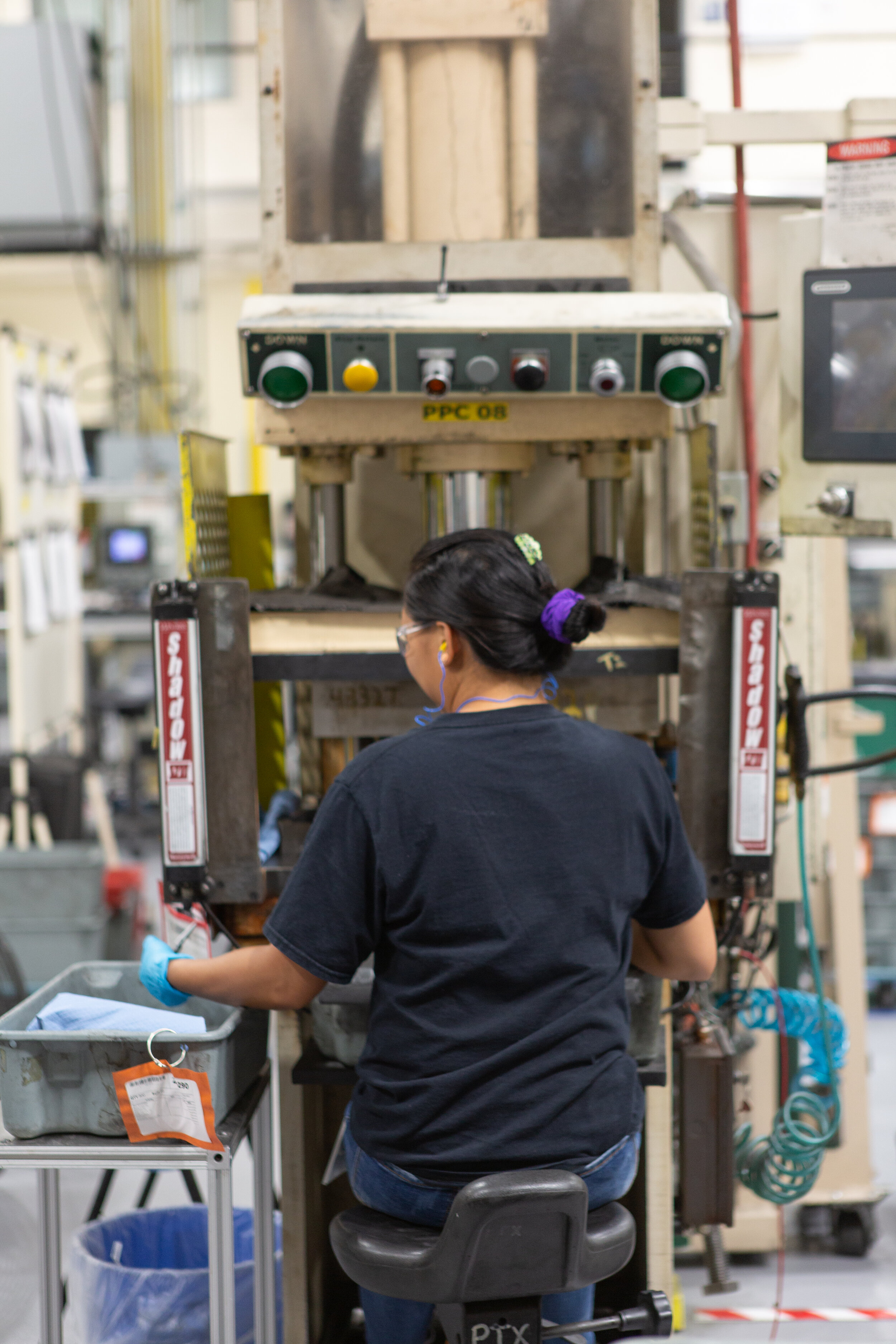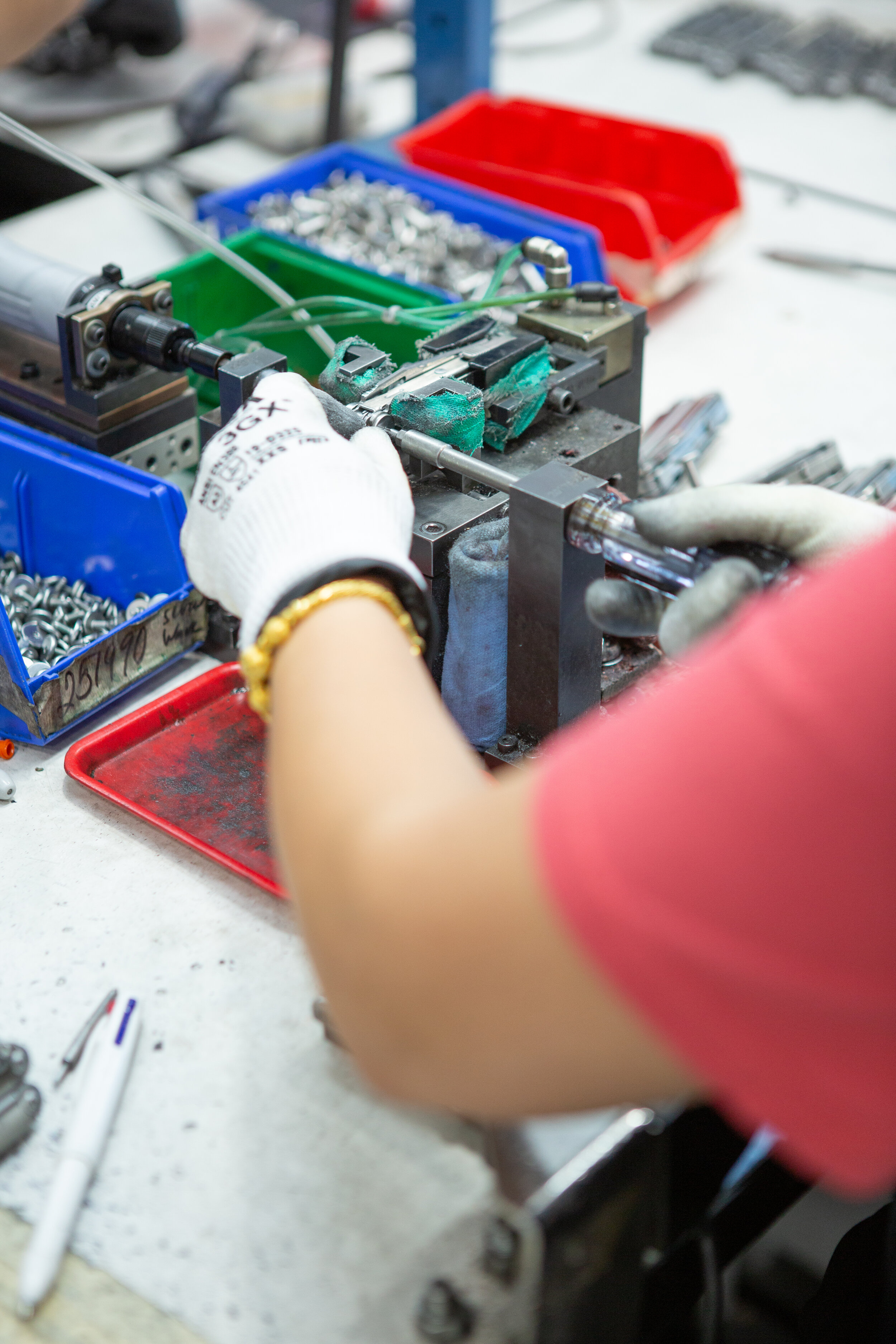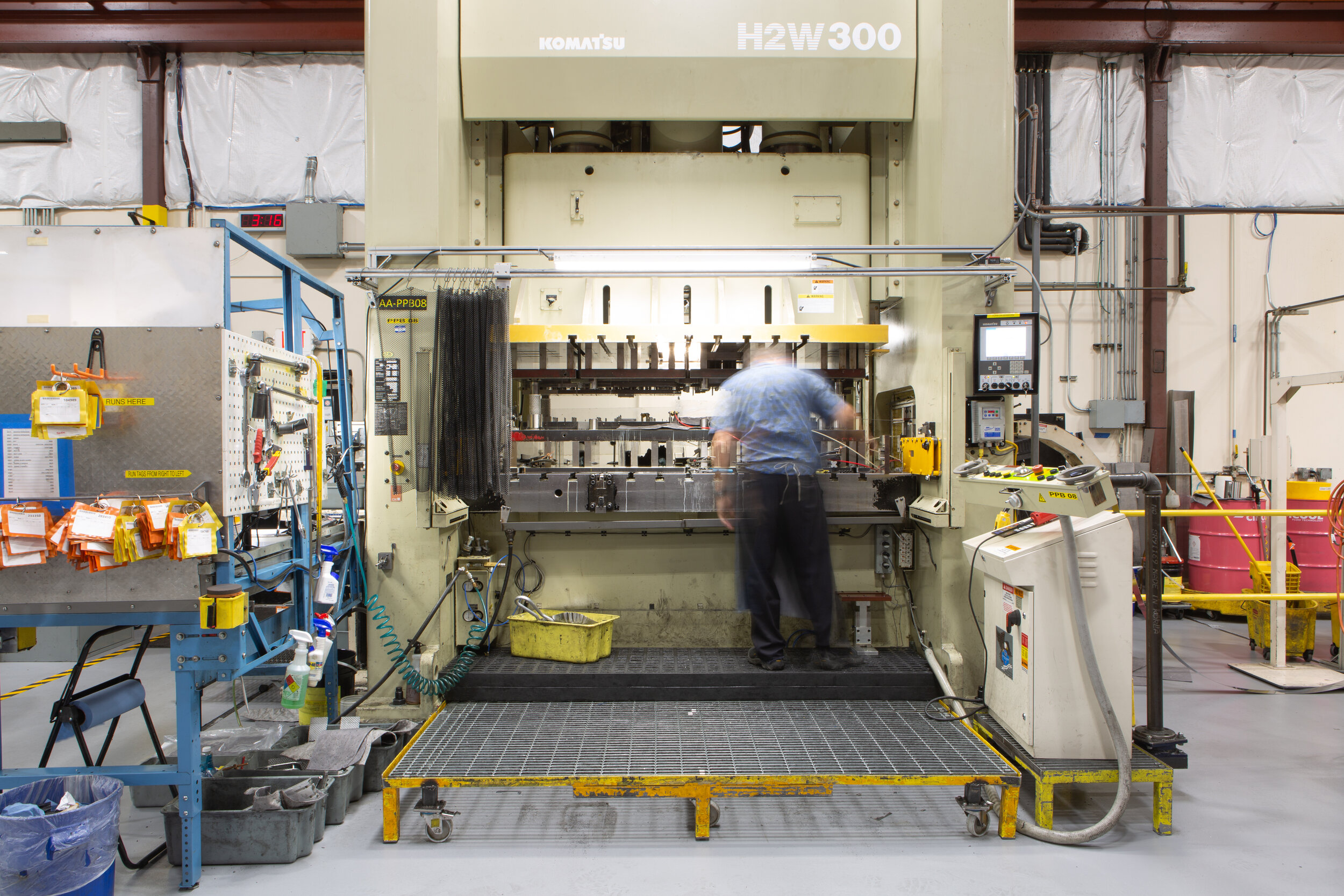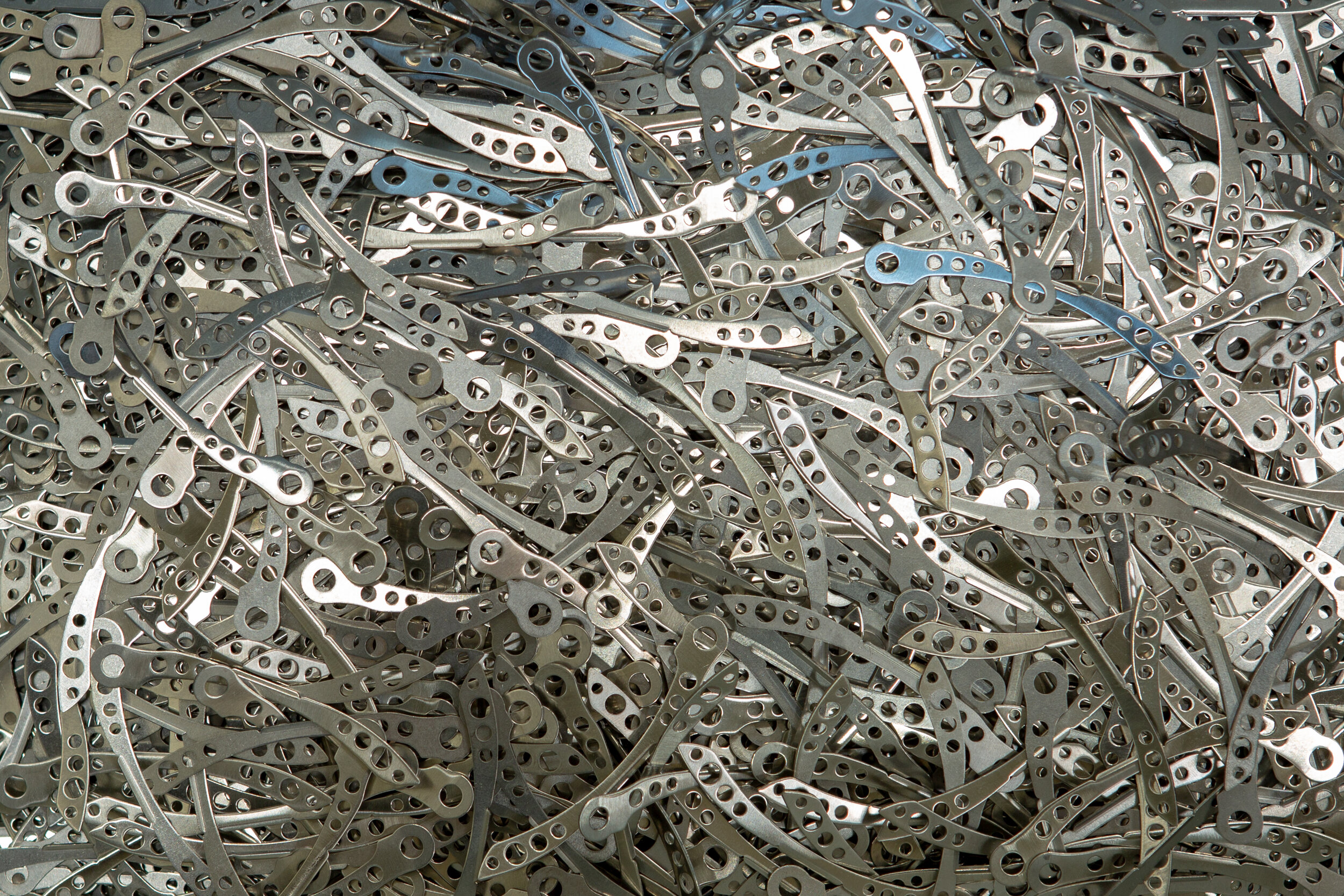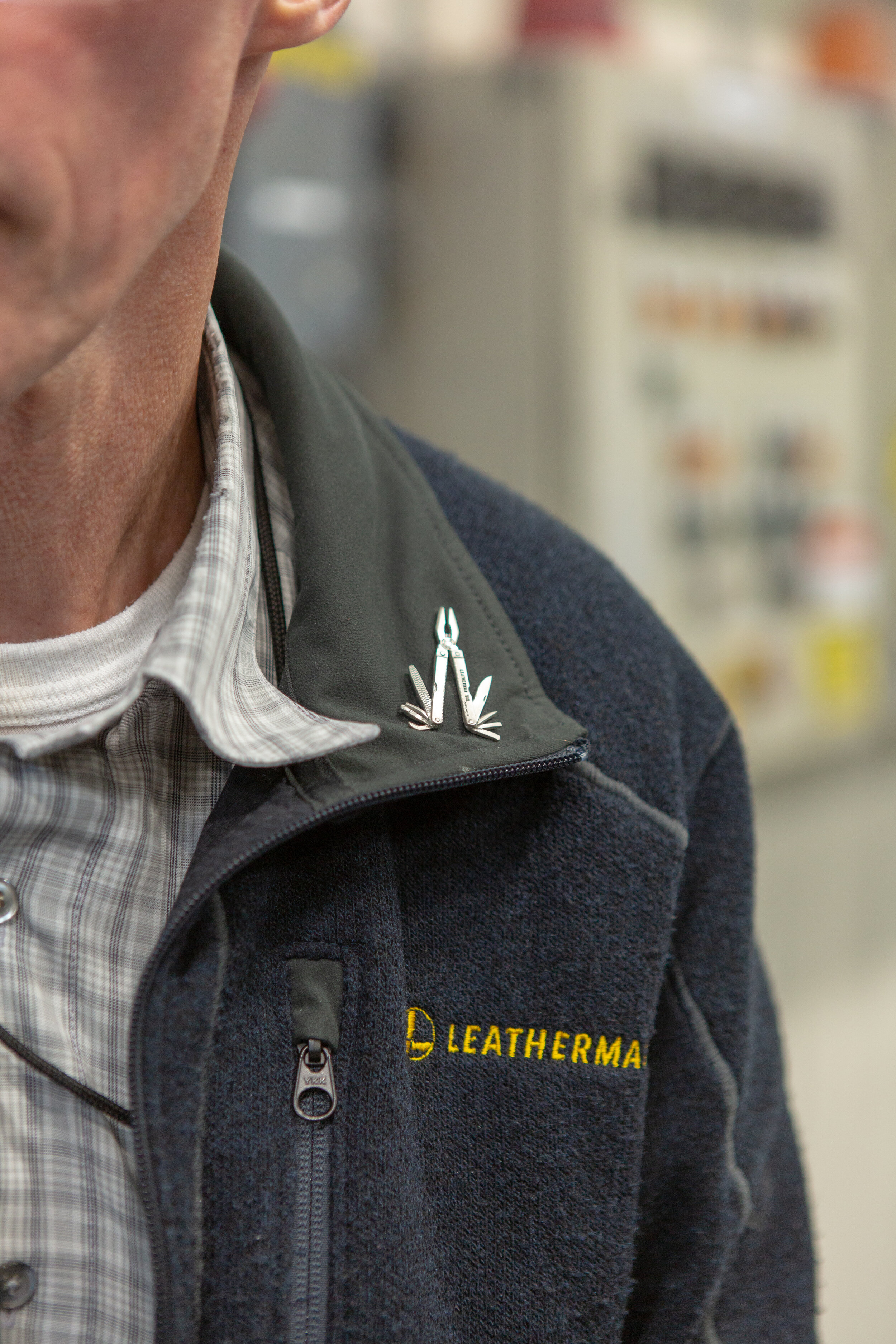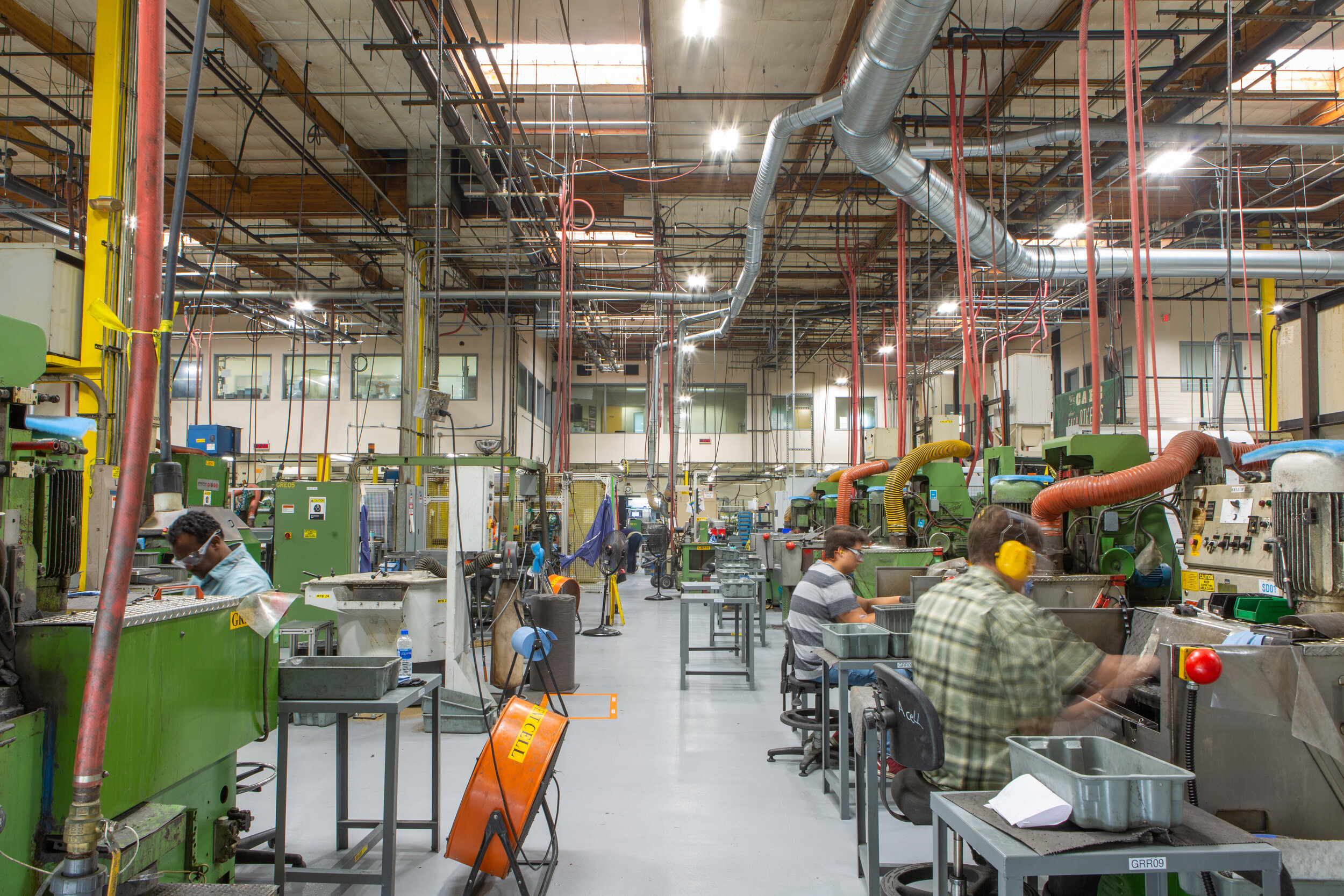I think of that peculiarity as I sit across the room from Adam Lazenby, Leatherman’s head designer. In his hand is a gadget released only months ago as part of the company’s newfound multitool collection, the Leatherman Free series. Nine Free multitools have made the cut under his inquisitive eye. I notice the tool in his hand and again grow transfixed, just as I had so long ago.
“It starts to feel like my hand is better than it was before because it’s so effortless,” Lazenby says. “The whole thing is much more ergonomic.” In his hand, a Leatherman Free progresses through a series of clicks and snaps, each one firm and comforting as tools lock into place. The Leatherman moves with such ease and freedom that a quick glance might lead one to assume he’s fiddling with nothing more than a metallic fidget spinner. “If we can create a tool that is pleasant enough to touch that people will just naturally start playing with it, then we know we have succeeded,” he confirms.
But a single word from the, ahem, unfolding conversation seems to resonate with Lazenby more so than any other: freedom. I say that because Lazenby prides himself on freedom. At 36 years old, he lives with his family on a sailboat and bicycles to work each day, all in rather modest fashion. It’s a lifestyle he’s chosen to lead for a few years now.
Before buying the boat, he and his partner lived life in a van. They did so if only to enjoy the present moment, and the moments to come. “We wanted to save money in a way that guaranteed adventure,” he says. “We really enjoyed that easygoing, free lifestyle of ‘if you want to have fun, just go.’”
When asked how he defines freedom, Lazenby pauses. I can see the gears turning as he ponders, searching for a simple response.“Freedom is being able to go until you choose to stop,” he answers rather stoically. “Choosing when and where to have an adventure without being hampered by logistics—that we can just up and go—there’s something incredibly beautiful about that.”
Perhaps only more compelling than Lazenby’s personal life is a lineage that can be traced from his perception of freedom to that of the Leatherman Free series, a project that took five years to bring to market. While the original Leatherman was famous for its butterfly design, everything you needed was on the inside, stowed away in hiding. With the Free series, tools now face out, removing the need to open the Leatherman simply to access one. With the flick of a thumb or push of a metal release, most any tool can now be opened with one hand, even without a fingernail. “When you have a problem, you can fix it,” Lazenby said. “There’s very little holding you back. It’s just right there, ready to go.”


